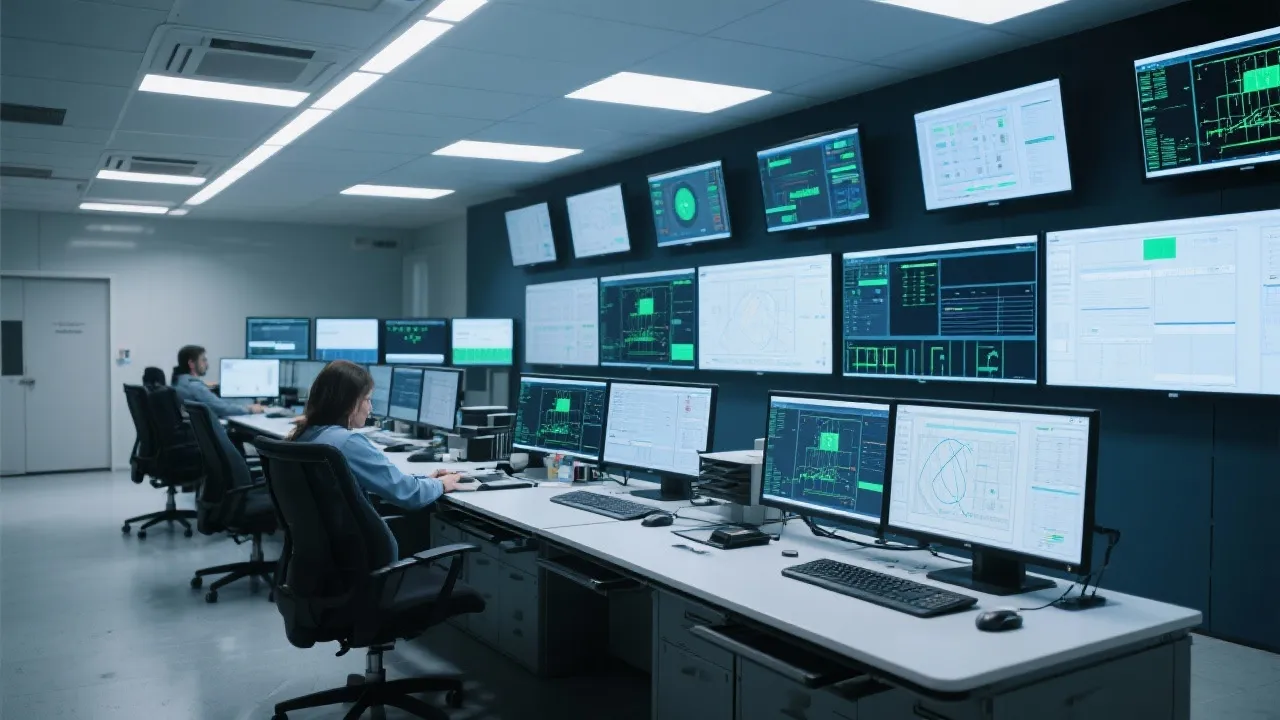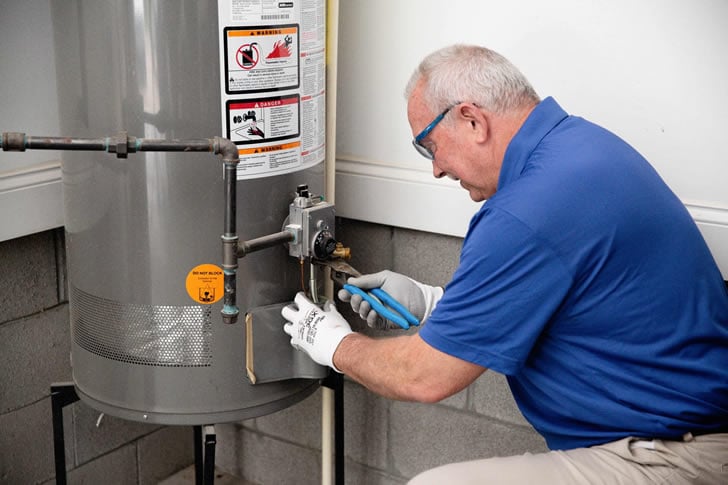Understanding Ihm Scada Systems
SCADA (Supervisory Control and Data Acquisition) systems, such as Ihm Scada, are critical for real-time data monitoring and remote control in industrial settings. These systems enhance efficiency and safety by enabling operators to monitor and manage devices remotely. With technological advancements, Ihm Scada continues to evolve, adapting to the increasing demands of various industries worldwide.

Introduction to Ihm Scada Systems
In today's industrial landscape, the role of Supervisory Control and Data Acquisition (SCADA) systems is more significant than ever. SCADA systems like Ihm Scada are designed to gather and analyze real-time data to control industrial processes with minimal human intervention. They facilitate streamlined operations and play a crucial role in industries ranging from manufacturing to utilities, enhancing both efficiency and safety. The integration of SCADA systems allows for real-time monitoring and control of processes that were previously reliant on manual operations, which not only reduces the risk of human error but also improves the overall operational efficiency.
As we delve deeper into the context of industrial automation, it's crucial to recognize the multifaceted advantages that Ihm Scada brings to the table. With the increasing complexity of manufacturing processes and the growing need for data-driven decision-making, the implementation of SCADA systems has evolved from a luxury to a necessity. The transition to automation has sparked a revolutionary change in how industries function, making it easier to handle processes that demand precision and speed.
The Core Features of Ihm Scada
SCADA systems serve as the backbone of industrial automation, providing essential services such as real-time monitoring, historical data logging, and remote access capabilities. Ihm Scada, with its intuitive interface and customizable modules, stands out by offering operators the ability to tailor the system to their specific needs. This flexibility enables users to optimize workflows and integrate with other systems seamlessly. The customization feature of Ihm Scada allows organizations to alter parameters such as data display formats and operational metrics to align with their industrial requirements, making it a versatile tool in various sectors.
One of the standout features of Ihm Scada is its user-friendly interface that simplifies complex processes. The system supports remote monitoring, enabling operators to control machinery and facilities from a distance, reducing the need for on-site presence and enhancing operational efficiency. This remote access capability is critical in today's fast-paced industrial environment, especially when dealing with geographically distributed facilities where oversight and control from a single location can significantly enhance responsiveness and operational control.
Moreover, Ihm Scada integrates advanced data visualization tools, allowing operators to interpret complex datasets quickly and accurately. Visualization tools such as graphs, heat maps, and dashboards convey real-time data in a user-adaptable format, making it easier for personnel to identify trends, anomalies, or potential issues before they escalate into significant problems. The rich analytic toolkit also empowers companies to perform preventative maintenance, ensuring resource longevity and minimizing unplanned downtime.
Impact of Ihm Scada on Industrial Efficiency
By enabling real-time data acquisition and control, Ihm Scada systems help minimize downtime and enhance productivity. These systems allow for the swift identification of issues, thereby reducing the response time to potential faults or failures. Ultimately, this leads to lower operational costs and improved reliability of industrial processes. The ability to monitor multiple parameters concurrently allows for holistic management of systems, ensuring that every aspect of the operation is optimized for peak performance.
Additionally, the integration of predictive analytics into Ihm Scada systems allows industries to foresee potential failures and implement maintenance in a proactive manner. This feature not only saves costs associated with inefficient operation but also extends machinery life. Historical data logging enables companies to maintain an archive of performance metrics, which can be analyzed to identify patterns and optimize processes over time.
Furthermore, by leveraging the robust reporting features within the Ihm Scada system, companies can create detailed performance reports tailored to specific operational goals or regulatory requirements. These reports often serve as valuable resources for strategic planning and operational enhancement discussions among stakeholders. The insights derived from this data aid in making informed decisions that positively impact the production line efficiency and overall profitability of the business.
Comparison of Ihm Scada with Other SCADA Systems
| Feature | Ihm Scada | Other SCADA Systems |
|---|---|---|
| User Interface | Highly customizable and user-friendly | Varies, generally less customizable |
| Integration Capabilities | Seamless integration with various systems | Requires additional configuration |
| Remote Monitoring | Advanced remote capabilities | Often limited to basic functions |
| Data Analysis Tools | Comprehensive analytic features | Basic analysis tools |
| Scalability | Easily scalable for growing operations | May require extensive modifications |
The Technological Evolution of Ihm Scada
As technology advances, Ihm Scada continues to adapt and evolve. Modern versions incorporate cloud computing and IoT (Internet of Things) to provide enhanced data insights and predictive maintenance capabilities. This evolution ensures that industries can leverage the latest technological innovations to maintain a competitive edge. The shift toward cloud-based architectures allows for data storage and access that transcends physical limitations, enabling organizations to update and analyze data from virtually any location with an internet connection.
Furthermore, the advent of IoT devices has integrated seamlessly with Ihm Scada, transforming the way data is collected from sensors and machinery in real-time. This technology allows for comprehensive data monitoring at a granular level, providing insights that were previously unattainable. The continuous feedback loop created through IoT connectivity enables not only improved operational efficiency but also insights into customer preferences and supply chain dynamics, thereby informing future operational strategies.
Additionally, the incorporation of artificial intelligence into Ihm Scada systems is a promising development. AI algorithms are capable of processing vast amounts of data to identify correlations and trends that human analysts may overlook. This advance leads to more informed decision-making, as AI can recommend optimal procedures and predict failure points based on historical performance data.
Requirements for Implementing Ihm Scada
Implementing an Ihm Scada system requires a thorough understanding of the specific industrial processes it will monitor. The successful deployment hinges on selecting compatible hardware and ensuring proper network infrastructure. This means identifying the types of sensors and communication protocols needed for the system and confirming they align with existing technology.
Additionally, training operators on the system's capabilities and maintenance requirements is crucial for maximizing the system's potential. The training program should focus on the distinct features of Ihm Scada, enabling users to become proficient in using the system to its fullest extent. This training typically involves a combination of theoretical learning and practical, hands-on experience to ensure that operators can manage both routine tasks and troubleshoot any unforeseen challenges effectively.
The integration process also includes performing comprehensive system tests to validate the setup. These tests ascertain that all components are functioning correctly and that data is being accurately captured and transmitted. This phase is vital as it guarantees that any operational inconsistencies are addressed before full-scale deployment, ensuring a smooth transition into regular operations.
A noteworthy aspect of the implementation process is the need for ongoing support post-deployment. Establishing a support framework can help organizations address issues swiftly and maintain optimal performance. This might involve periodic system updates, maintenance checks, and additional training as new features or upgrades become available, ensuring that the system continues to meet evolving business needs.
Future of Ihm Scada Systems
As industries become more reliant on data-driven decisions, the role of SCADA systems like Ihm Scada will only grow. Future iterations are likely to focus on enhanced cybersecurity measures, increased integration with AI for predictive analytics, and broader adoption of wireless technologies to support mobile monitoring and control. This focus on cybersecurity is particularly crucial as the rise of cyber threats continues to pose significant risks to industrial sectors, necessitating the implementation of robust security protocols to safeguard sensitive data.
The emergence of edge computing is another trend likely to influence the future development of Ihm Scada systems. By processing data closer to the source, edge computing reduces latency and enhances real-time decision-making capabilities. This technology allows for faster insights, which can be vital in time-sensitive industrial environments. It demonstrates how SCADA systems can harness advancements in technology to improve operational responsiveness and agility.
Moreover, as sustainability becomes a key focus for businesses, future SCADA systems are expected to incorporate features that help organizations track and reduce their environmental impact. This could include monitoring energy consumption, reducing waste, and ensuring compliance with environmental regulations. The alignment of technology with sustainability initiatives reflects a growing recognition of the importance of responsible resource management in modern industries.
FAQs
What industries benefit most from Ihm Scada systems? Industrial sectors such as manufacturing, energy, and utilities benefit significantly because of their need for real-time monitoring and automation. These sectors rely heavily on data-driven insights to optimize production efficiency and ensure reliable service delivery.
Can Ihm Scada integrate into existing systems? Yes, its flexible architecture allows seamless integration with legacy systems, ensuring a smooth transition. This capability enables organizations to upgrade their systems without the need for overhauling entire infrastructures, thereby preserving their initial investments and minimizing disruptions.
How does Ihm Scada improve operational efficiency? By providing real-time data and remote monitoring capabilities, Ihm Scada reduces downtime and enhances decision-making processes. The agility of access to real-time information allows operators to intervene proactively in operational processes, mitigating risks associated with unforeseen disruptions.
Is implementing Ihm Scada costly? While initial costs can vary based on system complexity and size, long-term savings and efficiencies often justify the investment. The return on investment (ROI) is typically realized through reduced operational costs and improved productivity metrics, leading to greater profitability over time.
Ihm Scada remains a pivotal tool in the realm of industrial automation, continually evolving to meet the dynamic needs of modern industries. Its adaptability and robust features make it a recommended choice for enterprises aiming to enhance their operational capabilities. As technologies continue to advance, Ihm Scada is likely to remain at the forefront of industrial automation, enabling companies to thrive in a rapidly changing environment. By fostering innovation and resilience, Ihm Scada systems will play an essential role in shaping the future of industries worldwide.
In conclusion, the comprehensive set of features and the inherent adaptability of Ihm Scada systems position them as vital instruments for industrial operations. Organizations looking to enhance performance, streamline processes, and respond to the increasing demand for data-driven decision-making will find considerable value in implementing such advanced SCADA solutions. By leveraging the capabilities offered by Ihm Scada, industries can not only optimize their current operations but also set the foundation for future growth and adaptation in a continuously evolving marketplace.










